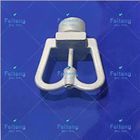High Specification ASTM B367 Gr2 Titanium Castings
| Place of Origin | Baoji, Shaanxi, China |
|---|---|
| Brand Name | Feiteng |
| Certification | GB/T19001-2016 idt ISO9001:2015 GJB9001C-2017 |
| Model Number | Titanium Casting |
| Minimum Order Quantity | To be negotiated |
| Price | To be negotiated |
| Packaging Details | Wooden case |
| Delivery Time | To be negotiated |
| Payment Terms | T/T |
| Supply Ability | To be negotiated |

Contact me for free samples and coupons.
Whatsapp:0086 18588475571
Wechat: 0086 18588475571
Skype: sales10@aixton.com
If you have any concern, we provide 24-hour online help.
x| Brand Name | Feiteng | Model Number | Titanium Casting |
|---|---|---|---|
| Certification | GB/T19001-2016 Idt ISO9001:2015 MANAGEMENT SYSTEM CNAS C034-M | Place Of Origin | Baoji, Shaanxi, China |
| Packaging | Wooden Case | ||
| Highlight | ASTM B367 Gr2 Titanium Castings,High Specification ASTM Titanium Castings,Feiteng titanium alloy casting |
||
Titanium Casting ASTM B367 Gr2 Titanium Castings Titanium MateriaI
| Name | Titanium Casting |
| Grade | Gr2 |
| Material | Titanium |
| Standard | ASTM B367 |
| Packaging | Wooden case |
| Delivery |
Xi'an port, Beijing port, Shanghai port, Guangzhou port, Shenzhen port |
Inspection of casting internal defects
For internal defects, the commonly used nondestructive testing methods are radiographic testing and ultrasonic testing. Among them, X-ray detection has the best effect, which can get the visual image reflecting the type, shape, size and distribution of internal defects. However, for large castings with large thickness, ultrasonic detection is very effective, and can accurately measure the location, equivalent size and distribution of internal defects.
X-ray detection, generally use X-ray or gamma ray as a ray source, so the need to produce ray equipment and other ancillary facilities, when the workpiece is placed in the ray field irradiation, the radiation intensity of the ray will be affected by the internal defects of the casting. The radiation intensity emitted through the casting varies locally with the size and nature of the defect, forming a radiographic image of the defect, which can be recorded by radiographic film, or observed in real time through a fluorescent screen, or detected by a radiation counter. Which record by ray film imaging method is the most commonly used method, known as the radiographic inspection, radiographic reflected defect image is intuitive, defect shape, size, quantity, plane position and distribution can be presented, only defect depth generally cannot be reflected, need to take special measures and calculations to determine. International casting industry network appeared the application of X-ray computer tomography, because of the equipment is relatively expensive, the use of high cost, can not be popularized, but this new technology represents the future development direction of high definition X-ray detection technology. In addition, the microfocus X-ray system using an approximate point source can actually eliminate the blurred edges generated by the larger focus device and make the image clear. Digital image system can improve the signal-to-noise ratio (SNR) of the image and further improve the image clarity.
Ultrasonic detection can also be used to check internal defects. It uses the sound beam with high frequency sound energy in the propagation of the casting inside, and produces reflection when it encounters the internal surface or defect to find defects. The amount of reflected sound energy is a function of the directivity and properties of the inner surface or defect, as well as the acoustic impedance of such a reflective body. Therefore, the reflected sound energy of various defects or inner surfaces can be used to detect the location of defects, wall thickness or depth of defects under the surface. Ultrasonic testing as a widely used nondestructive testing means, its main advantages are: high detection sensitivity, can detect fine cracks; Has a large penetration capacity, can detect thick section castings. Its main limitations are as follows: it is difficult to interpret the reflected waveform of disconnection defect with complex contour size and poor directivity; Undesired internal structures, such as grain size, microstructure, porosity, inclusion content or fine dispersed precipitates, also hinder waveform interpretation. In addition, reference to standard test blocks is required.
Features
1. Low Density and High Specification Strength
2. Excellent Corrosion Resistance
3. Good Resistance to Effect of Heat
4. Excellent Bearing to Cryogenics Property





